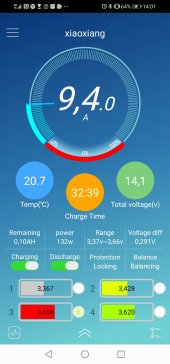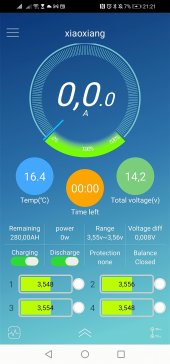Hii!
I really hope someone here can help me out. I have some problems with my lifepo4 280ah EVE battery and/or BMS
Sometimes, the power cut off for like a second. 12 lights will turn off for a second and restart again.
Unfortunately, the Inverter does not restart automatically and I have to do it manually like all the time. My fridge runs on 230 volt so this is really annoying
I added some screenpicture of the battery during charging and discharge and in rest. In rest they seem to be balanced fine, but during charging or discharging, the app tells me that the cells are heavily discharged/charged and very unbalanced. As soon as I turn the load off, they seem balanced.
Anyone out here who knows what could be the problem?
I really hope someone here can help me out. I have some problems with my lifepo4 280ah EVE battery and/or BMS
Sometimes, the power cut off for like a second. 12 lights will turn off for a second and restart again.
Unfortunately, the Inverter does not restart automatically and I have to do it manually like all the time. My fridge runs on 230 volt so this is really annoying
I added some screenpicture of the battery during charging and discharge and in rest. In rest they seem to be balanced fine, but during charging or discharging, the app tells me that the cells are heavily discharged/charged and very unbalanced. As soon as I turn the load off, they seem balanced.
Anyone out here who knows what could be the problem?








